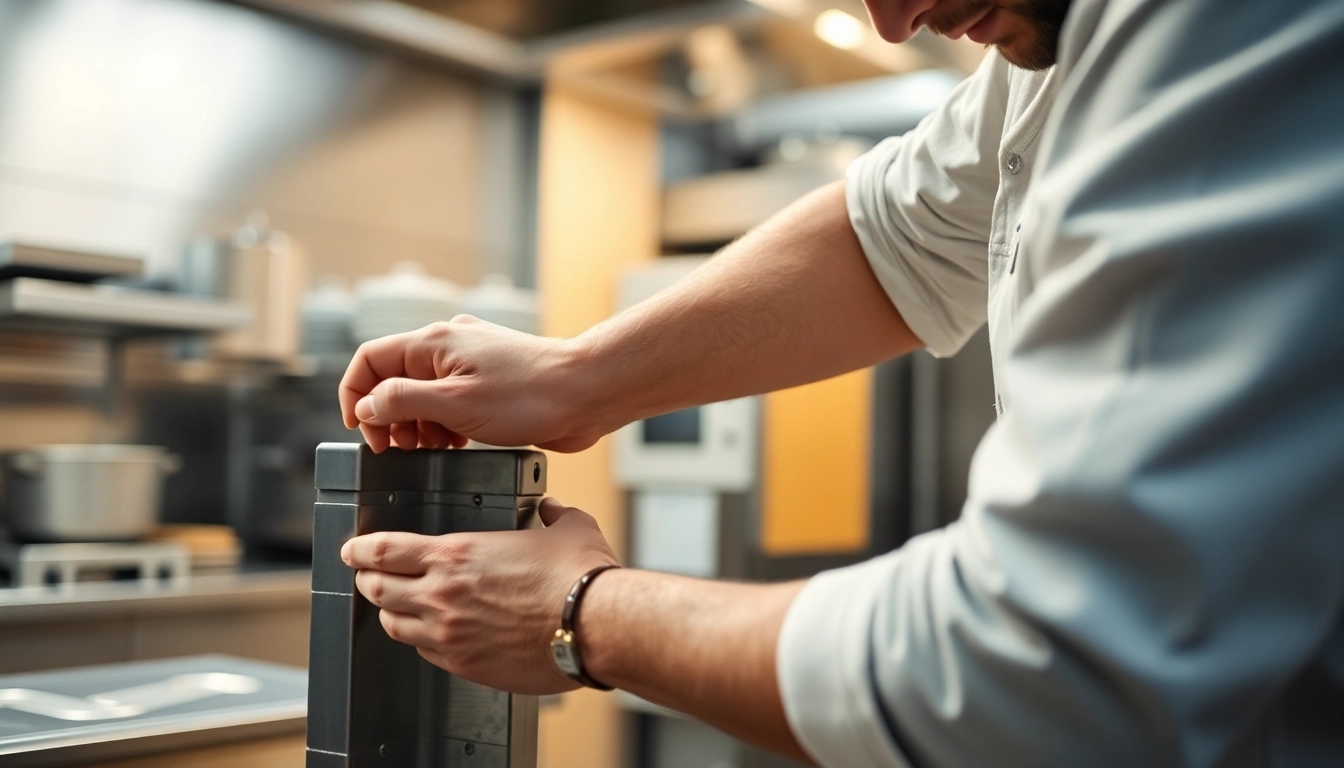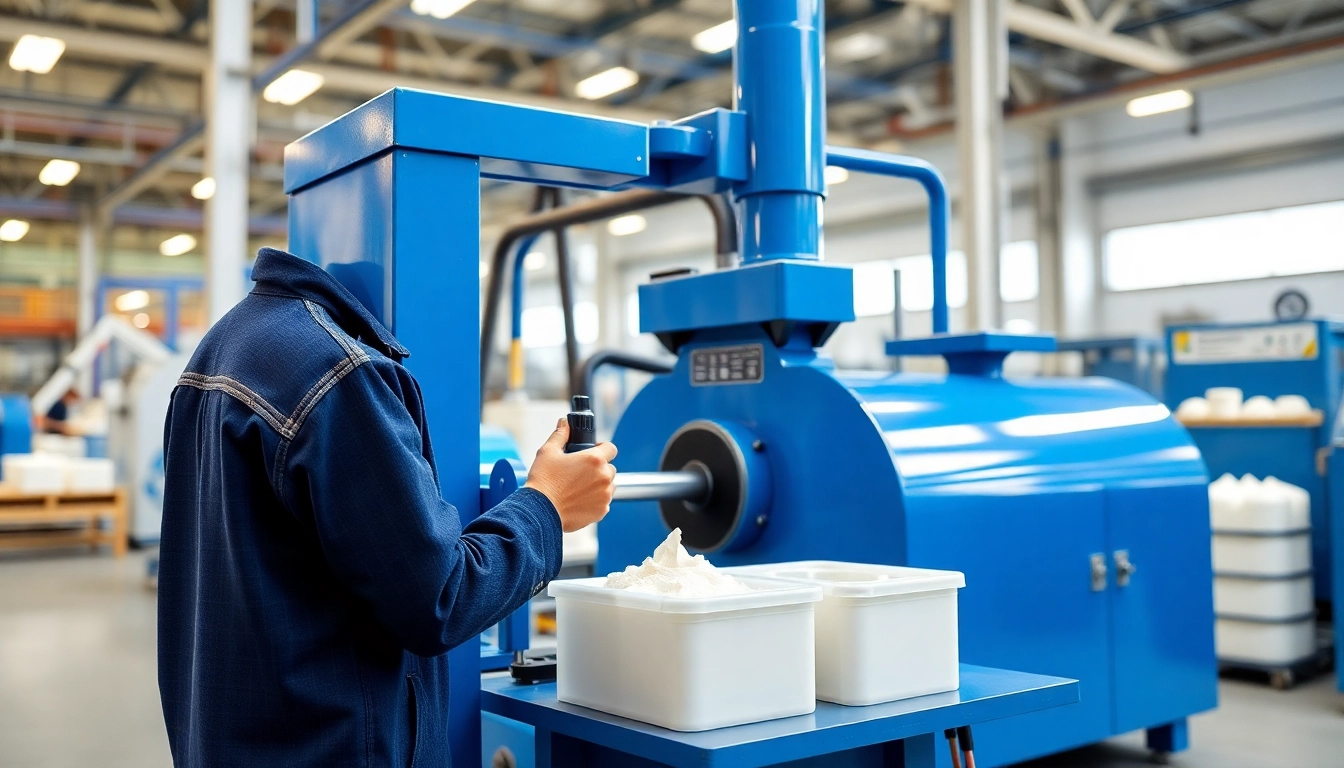Understanding Chef Bases and Their Importance
What is a Chef Base?
A chef base is a multifunctional piece of kitchen equipment that combines refrigeration with workspace efficiency. Specifically designed for commercial kitchens, this unit acts as a refrigerator or freezer while also providing a work surface on which cooking appliances can be placed. This compact design is invaluable in high-paced environments like restaurants, where space and efficiency are at a premium. Chef bases allow chefs to keep ingredients fresh and within arm’s reach, significantly streamlining food preparation and cooking processes. This convenience is crucial in maintaining high-quality service during busy restaurant hours. For those seeking to understand the nuances of chef base repair, it’s important to grasp the fundamentals of what these units offer.
Benefits of Using Chef Bases in a Commercial Kitchen
The implementation of chef bases in commercial kitchens brings numerous benefits, notably:
- Space Efficiency: With their dual purpose of refrigeration and work surface, chef bases save valuable space in crowded kitchens.
- Enhanced Workflow: Chefs can access ingredients quickly, allowing for faster meal preparation and improved service speed.
- Temperature Control: Chef bases are designed to maintain optimal temperatures, ensuring food freshness and safety, which is essential for compliance with health regulations.
- Versatility: These units can accommodate various kitchen equipment, such as grills and fryers, enhancing the utility of the cooking area.
Common Issues with Chef Bases
Despite their practicality, chef bases can encounter a range of issues that may necessitate repair. Common problems include:
- Temperature fluctuations: Inconsistent cooling can lead to food spoilage and health risks.
- Electrical issues: Malfunctions in the electrical components can render a chef base unusable.
- Physical wear and damage: Over time, the physical structure of the chef base may suffer from wear and tear due to heavy usage.
Identifying Common Chef Base Repair Problems
Temperature Control Issues
Temperature control issues are amongst the most critical concerns in chef base maintenance. These problems can stem from a variety of causes including a faulty thermostat, compressor failure, or improper seals on the doors. Identifying the root cause requires an understanding of the design and functionality of the appliance.
Symptoms of temperature issues may include:
- Food not staying at the proper temperature.
- Frost buildup in freezer models.
- Frequent cycling of the compressor.
Regular monitoring and maintenance are essential to prevent these issues from escalating. Implementing temperature logs can help pinpoint when problems begin, allowing for timely intervention.
Electrical Malfunctions
Electrical malfunctions can cripple kitchen operations, taking chef bases out of service unexpectedly. Common signs include:
- Non-responsive controls.
- Unusual noises signaling an internal fault.
- Fluctuating power to the unit.
Electrical issues may require a comprehensive understanding of the unit’s wiring system, and in many cases, professionals should handle repairs to ensure safety and compliance with regulations.
Physical Damage and Wear
Over time, chef bases can suffer physical damage due to the rigors of a busy kitchen. Common problems include:
- Dents or scratches on the surface.
- Loose or broken hinges on doors.
- Worn-out drawer slides or handles.
Addressing these issues promptly not only protects the investment in the equipment but also maintains a professional appearance in the kitchen environment. Simple repairs, like replacing handles or tightening screws, can often be performed without professional help.
Step-by-Step Guide to Chef Base Repair
Essential Tools and Equipment for Repairs
Having the right tools is crucial for performing effective repairs on a chef base. Essential tools typically include:
- Screwdrivers: Both flathead and Phillips head for general assembly and disassembly.
- Socket set: For fastening and loosening bolts.
- Multimeter: To diagnose electrical issues.
- Thermometer: For monitoring temperature accuracy.
- Replacement parts: Having common parts on hand can expedite repairs.
A well-equipped maintenance kit can help avoid downtime, ensuring that your chef base is always operational when needed.
Basic Repair Techniques Explained
Basic repair techniques often include:
- Tightening connections: Regularly check connections to prevent overheating and malfunction.
- Replacing seals: When doors don’t seal properly, replacing the rubber seals can improve efficiency.
- Cleaning coils: Dust and debris build-up can hinder performance, necessitating regular cleaning.
Understanding when and how to implement these repairs can extend the life of your chef base significantly.
When to Consult a Professional for Chef Base Repair
Not all repairs are suitable for DIY fixes. It’s advisable to consult a professional when:
- Dealing with complex electrical issues that pose safety risks.
- Requiring specialized tools or expertise specific to the refrigeration system.
- Facing persistent temperature control problems despite regular maintenance.
Engaging with experienced technicians can ensure repairs are performed correctly and comply with safety standards.
Preventative Maintenance for Chef Bases
Best Practices for Daily Maintenance
Implementing daily maintenance checks is crucial for the longevity of chef bases. Key practices include:
- Wiping down surfaces to prevent debris build-up, which can harbor bacteria.
- Checking temperatures at the beginning and end of shifts.
- Ensuring that doors close tightly and that seals are intact.
Establishing a routine maintenance log can help keep track of daily checks and identify areas needing attention.
Long-Term Care to Enhance Longevity
Beyond daily practices, long-term care is essential for maintaining equipment functionality. Suggestions include:
- Scheduling biannual professional cleanings and checks of mechanical components.
- Storing the unit in a well-ventilated area to prevent overheating.
- Regular replacement of worn-out parts, such as gaskets and fans.
Investing in equipment care minimizes the risk of unexpected failures and ensures maximum efficiency.
Common Mistakes to Avoid
Some common pitfalls in maintaining chef bases include:
- Neglecting regular cleaning of coils.
- Overloading the unit, which can strain the compressor.
- Ignoring manufacturer’s maintenance guidelines.
A systematic approach to maintenance can help avert these issues and extend the lifespan of the equipment.
Resources and Support for Chef Base Maintenance
Where to Find Genuine Replacement Parts
Securing quality replacement parts is vital for effective repairs. Websites like Parts Town and Migali offer extensive inventories of chef base parts necessary for repairs. Make sure to verify that parts are genuine and compatible with your specific unit model.
Online Communities and Forums for Advice
Engaging with online communities can provide invaluable insights. Forums like HVAC-Talk and ChefSteps feature discussions on common issues and solutions shared by experienced chefs and repair technicians. These platforms can serve as helpful resources for troubleshooting and repair techniques.
Professional Repair Services to Consider
When facing complex repair issues, consider reaching out to professional repair services specialized in commercial kitchen equipment. Many companies offer service contracts that include preventative maintenance, ensuring that your chef base remains in peak condition.



